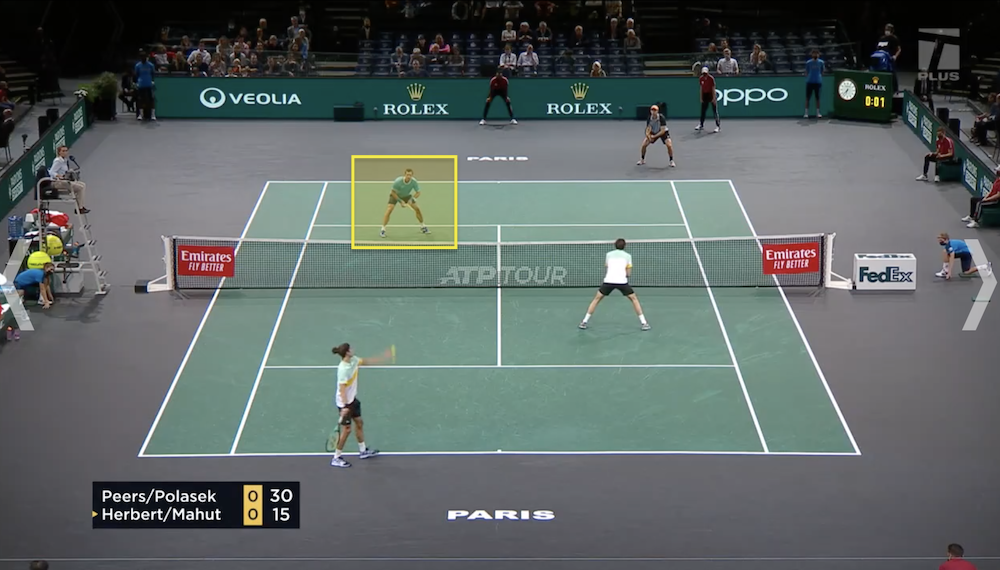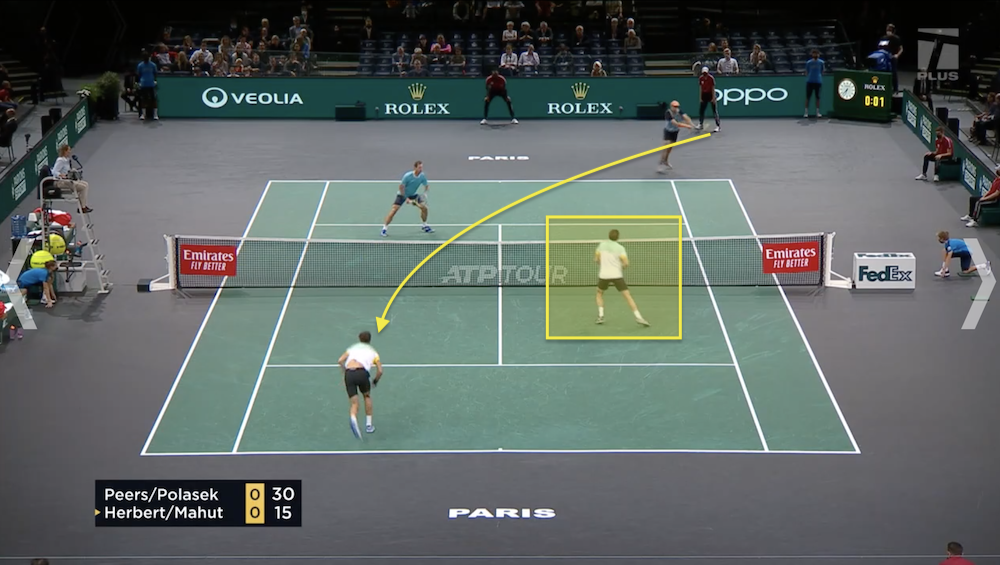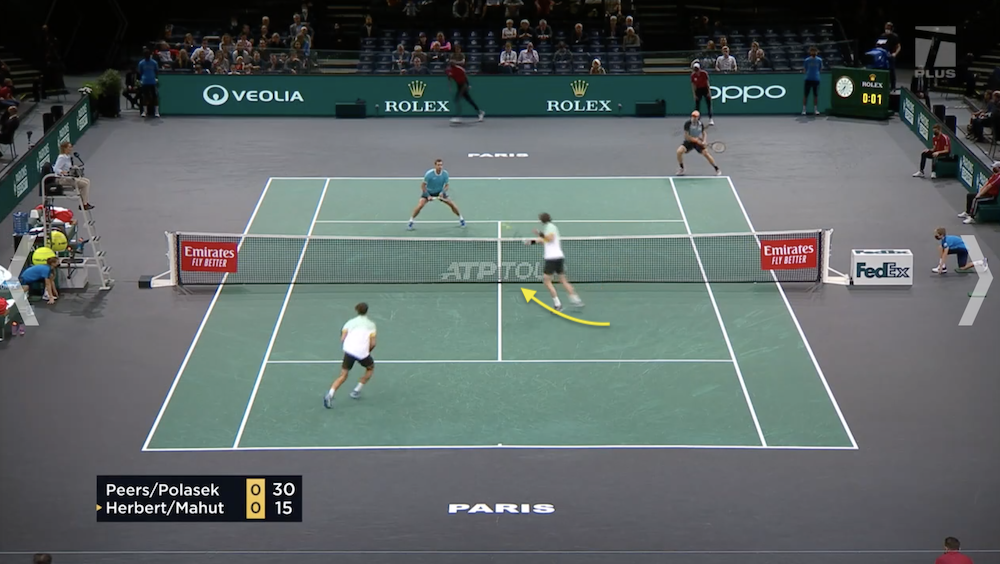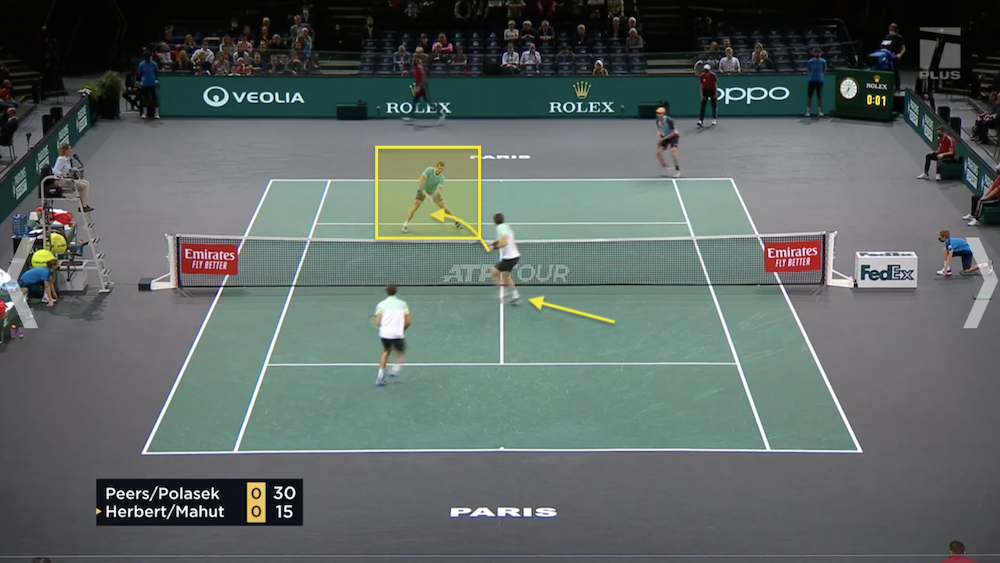G’day!
Where you stand on the court to start the point in doubles really, really matters!!!
FOCUS: Positioning of the Returner’s Partner.
The Returner’s partner is by far the most challenging position to play on the doubles court. The other three players all get to hit the ball before they do. The Returner’s Partner will often react to what somebody else has done instead of attacking themselves.
When the server is hitting their 1st serve, it is imperative to be neutral or defensive with mindset and positioning. A quality first serve will pressure the returner and bring the Server’s Partner into play.
So, let’s look at the following scenario and pinpoint why the serving team won the point.
Picture 1: The Start Of The Point

Herbert is serving, and his partner, Mahut, is at the net. Peers is returning, and his partner, Polasek, is positioned INSIDE the service box.
This is where the percentages immediately drop for the returning team to win the point – even before the first serve has been hit. Polasek is standing in a highly aggressive position with two feet inside the service line. That’s more acceptable when facing a second serve, but it’s rolling the dice against a first serve.
Why? Reaction time.
If this first serve goes in and Peers is under pressure, Mahut will be swarming the net and looking to put the ball right at Polasek because he won’t have enough time to react to hit the ball back over the net.
Picture 2: The Return Of Serve

Herbert makes a quality first serve out wide to Peers. Now, Peers possesses an excellent backhand return, but look how his feet are together on this occasion, and he is reaching for the ball.
He has a tough shot. How do we know? Look at Mahut at the net. He is picking up on all the same signs and knows it’s tough for Peers to beat him down the line. So he is cutting to the middle of the court early to go and put the ball away.
Picture 3: Server’s Partner Volleys The Ball

Just as we anticipated, Mahut is all over the center of the court based on the quality first serve from Herbert.
Now, where should Mahut try to hit the ball?
Well, not back to Peers, who will probably scramble the next shot back into the court. It’s best to go right at Polasek, who still has both his feet inside the service box, even though his team is nowhere near being on offense.
Picture 4: Returner’s Partner Misses The Volley

Mahut does the right thing tactically and hits the ball right at Polasek, who has no time to react and puts the volley straight into the net.
When did the returning team lose the point? Before it started, Polasek took an aggressive position with both feet inside the service line.
Against the first serve, he needed to be standing with both feet BEHIND the service line, which buys him enough reaction time to have a much better chance of blocking the volley back into the court.
SUMMARY
The Returner’s Partner needs to be neutral to defensive to begin the point. They are reactive. They need to be back far enough from the net that they have enough reaction time to get the ball back in the court if the Server’s Partner gets involved in the point and hits the ball right at them.
How many points per match is this specific coaching advice worth to the returning team? Probably about 6-8 points, which is certainly enough to turn a loss into a victory.
Best,
Craig

